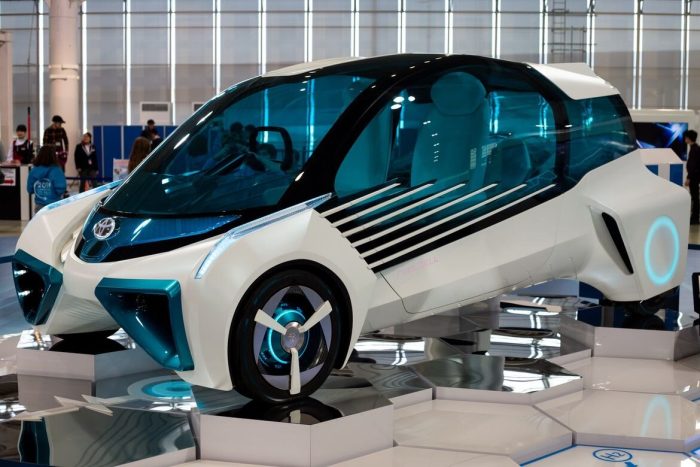A study led by UCLA researchers could help accelerate the use of hydrogen as an environmentally friendly source of energy in transportation and other applications.
The team developed a method for predicting platinum alloys’ potency and stability—two key indicators of how they will perform as catalysts in hydrogen fuel cells. Then, using that technique, they designed and produced an alloy that yielded excellent results under conditions approximating real-world use.
“For the sustainability of our planet, we can’t keep living the way we do, and reinventing energy is one major way to change our path,” said corresponding author Yu Huang, a professor of materials science and engineering at the UCLA Samueli School of Engineering and a member of the California NanoSystems Institute at UCLA. “We have fuel cell cars, but we need to make them cheaper. In this study, we came up with an approach to allow researchers to identify the right catalysts much faster.”
Fuel cells generate power using oxygen from the atmosphere and hydrogen. A key step in the process is using a catalyst to break the bonds between pairs of oxygen atoms. The catalysts that work best are highly active, in order to drive the reaction, while also being stable enough to be used for long periods of time. And for those designing fuel cells, finding the best catalysts has been a major challenge.
Platinum is the best element for the purpose, but its rarity makes the technology prohibitively expensive for large-scale adoption. An alloy combining platinum with a more readily accessible metal or metals would reduce the cost, but there has never been a practical, real-world method for quickly screening which alloy would make the best catalyst.
As a result, advances in technology have come through trial and error so far.
“This is a decisive step forward toward the rational design, down to the microscopic scale, of catalysts with optimal performance,” said Alessandro Fortunelli of Italy’s National Research Council, a co-corresponding author of the paper. “Nobody has ever come up with a method, either theoretical or experimental, to predict the stability of platinum alloy catalysts.”
The new method predicts both the potency and the stability of platinum alloy catalysts. It was developed using a combination of experiments, complex computation, and X-ray spectroscopy, which allowed the investigators to precisely identify chemical properties.
The researchers then created catalysts combining precise amounts of platinum, nickel, and cobalt in a specific atomic structure and configuration based on their experimental measure. They showed that the alloy they designed is both highly active and highly stable, a rare but much-needed combination for fuel cell catalysts.
Huang said that the method could be applied to potential catalysts mixing platinum with a subset of metals beyond nickel and cobalt.
The paper’s other co-corresponding authors are chemist Qingying Jia of Northeastern University and theorist William Goddard of Caltech. Huang, whose UCLA laboratory was primarily responsible for designing and testing the catalyst, said the collaboration with scientists and engineers at other institutions was vital to the study’s success.
“Lacking any of these partners, this work would be impossible,” she said. “For a long-term, curiosity-driven collaboration such as this one, the most important thing is to have the right people. Every single one of us was focused on digging deep and trying to figure out what was happening. It also helped that this was a fun team to work with.”






